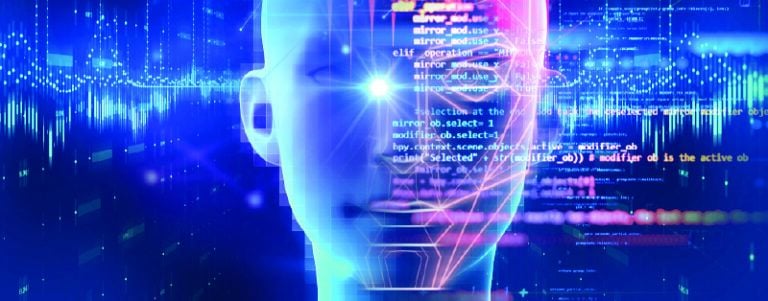10 Best Data Science Programming Languages of 2023 That Every Data Scientist Must Be Aware

CoHumans communicate with one another using languages. Similarly, data science programming languages like Python, R, C++, and others make it convenient for humans to interact with machines. They translate your commands into a language that the machines can understand and follow.
Data scientists, web developers, software engineers, and others need to be well-versed in different programming languages because they work with machines closely.
How Are Programming Languages Used in Data Science?
Programming languages are used in data science for cleaning and organising raw data sets, data visualisation, data analysis, and developing machine learning models. Below are the areas where data scientists can use programming languages:
- Data collection and preparation– Programming languages can extract, clean, and transform data from various sources into a format suitable for analysis.
- Data analysis– Programming languages can perform statistical analysis and generate actionable insights from data.
- Data visualisation– Programming languages can create visual representations of data, such as charts, graphs, and maps.
- Developing machine learning models– Programming languages are used to build, train, and validate machine learning models.
Top 10 Data Science Programming Languages
1. Python
Python is one of the most popular data science programming languages because it is easy to use and learn. It is used by data scientists for data collection and cleaning, data exploration, data modelling, and data visualisation.
Here are some of the reasons why you should use Python:
- It has an English-like syntax, making it easy to learn and understand. Data scientists with zero programming background can also learn Python, contributing to its popularity.
- Python has many open-source libraries that provide data scientists with different packages for collecting, cleaning, and processing data. For instance, the Panda library can be used for data manipulation and analysis, the Matplotlib library can be used for data visualisation, and more.
Pro-tip:
- In data science, Python is best used for automation. It helps in automating data science tasks that save a lot of time and help in extracting valuable data in less time.
- The endless support and community guidance provided while using Python makes it the first choice of many data scientists.
2. Java
Java is another very popular computer language among data scientists. It is one of the most tested and proven languages used for scaling large artificial intelligence and machine learning applications.
Java is also known as write once and run anywhere or WORA because a Java code can run across all Java-enabled systems without any adjustments. This is possible because of Java Virtual Machine or JVM.
Java is used by data scientists to build complex applications from scratch because it is capable of delivering results much faster than other programming languages. It can also be used for data processing, data analysis, data visualisation, and natural language processing (NLP). Apart from that, data scientists use Java to apply machine learning algorithms to real-life applications.
Here are some reasons why you should use Java:
- Java is perfect when it comes to scaling Artificial intelligence and Machine learning (AI and ML) products and applications. It helps in building AI and ML applications from scratch. So, if you plan to build AI and ML applications, using Java as your programming language is wise.
- Java is highly functional in several data science processes like data collection, cleaning and analysis, statistical analysis, Natural Language Processing (NLP), and data visualisation.
3. R
R is a specialised programming language that is well-known because it can do statistical and data visualisation-associated tasks more efficiently. It is an analytical computer language created by statisticians for statistical and data analysis purposes. That’s why this programming language is mostly used by data scientists for statistical computing and data visualisations.
efficiently. It is an analytical computer language created by statisticians for statistical and data analysis purposes. That’s why this programming language is mostly used by data scientists for statistical computing and data visualisations.
Here are some of the reasons why you should use R:
- R makes it easy to import data, clean them, and prepare them for analysis. There are many approaches and packages that you can select to clean the data quickly and easily. For example, the dplyr and tidyr packages available on R are used by data scientists for selecting, transforming, summarising, and grouping data into wide formats.
- R offers a broad collection of visualisation libraries along with extensive online guidance on their usage. It also offers data visualisation in the form of 3D models and multi-panel charts, which makes it easy to interpret data in any format.
4. Julia
Julia is a dynamic and high-performing programming language used in scientific computing. Just like R, Julia can also be used in statistical computations and data analysis. There are many reasons why data scientists use Julia for data science and analytics. Some of them are that it is easy to start and faster to execute.
Here are some reasons why you should use Julia:
- Julia has an easy-to-understand syntax and a flexible ecosystem, making it easy to execute complex tasks without much guidance and support. Julia is also called the new-age Python because of its easy syntax and flexible ecosystem.
- Julia has all the features that make the data visualisation process easier. For instance, you can export data from Julia as an HTML code or in a standard png format, making it easy to embed in documents and spreadsheets.
5. Scala
Scala’s name implies that it is a scalable programming language that is predominantly used in data science and machine learning for different reasons. For instance, in data science, Scala can be used for data processing and generating deep insights from big data. On the other hand, in machine learning, Scala can be used for prototyping.
Here are some reasons why you should use Scala:
- Scala is a perfect tool for data processing. It can interact with the data that is stored in a distributed manner and perform data processing.
- Scala is an improved version of Java, created to remove redundant codes. It has many libraries and APIs that are not present in Java, allowing programmers to finish data science and analytics quicker.
- Scala is a functional language, which means that it has an easy-to-understand syntax, making it easier for new data scientists to understand and use.
6. Go
 Go or GoLang is a popular data science programming language that is mostly used for data visualisation, especially in machine learning projects. It has gained popularity because of its flexible and easy-to-understand syntax. For data scientists, Go can be of great help in machine learning and artificial intelligence-related tasks.
Go or GoLang is a popular data science programming language that is mostly used for data visualisation, especially in machine learning projects. It has gained popularity because of its flexible and easy-to-understand syntax. For data scientists, Go can be of great help in machine learning and artificial intelligence-related tasks.
Here are some reasons for using the Go programming language:
- Go shares a similar syntax as C (programming language). However, it has added features like memory safety, garbage collection, and concurrency that are missing in C. These features make it easier to handle data, especially during large projects.
- Go is known for its support for concurrency, which is the ability to run multiple tasks simultaneously. Go achieves its concurrency through the use of Goroutines and channels, which allow them to run multiple operations at the same time. This makes Go an ideal choice for building high-performance and scalable projects that involve a large set of data
7. MATLAB
MATLAB stands for Matrix Laboratory. It is a computer language that is used for technical computing. It is written in C, C++, and Java and is used for matrix manipulations, plotting of functions, implementation of algorithms, and creation of user interfaces.
Here is the main reason why you should use this programming language:
- It has simple syntax, interactive plotting features, and built-in machine learning and deep learning toolboxes that facilitates data science and analytics. These features allow data scientists to perform a standard statistical procedure every time, train simple machine learning models, and more.
8. SQL
SQL is a programming language that is used for converting raw data into something that can draw deep insights. It stands for Structured Query Language and is built for storing, retrieving, and manipulating data in databases. SQL comes into the picture only when data scientists have structured data.
Here are some reasons why you should use SQL:
- Most of the commands in SQL are made up of descriptive words that are easy to understand compared to other computer languages. Furthermore, SQL is a simple data science programming language for new data scientists to read and learn.
- SQL helps data scientists to manage the database by storing large sets of data and expediting workflow executions.
9. JavaScript
JavaScript, often abbreviated as JS, is a programming language that every data scientist must learn to make the data visualisation process easy. Typically, it is used for building websites and applications by combining it with different web development and design-oriented languages like HTML and CSS. However, in data science, it is used for data visualisation and developing machine learning models, among others.
Here is why you should use JS programming language:
- You can use JavaScript for data visualisation. Although JavaScript is mostly used by web developers for enhancing user experience, data scientists can use it to create data visualisations like 2D or 3D models.
- JavaScript can also be used for automation and machine learning. One of the popular libraries of JavaScript-TensorFlow enables anyone to create their machine learning model. This open-source library can also make it easy to work with artificial neural algorithms and train different machine-learning models.
10. C++
C++ is a general-purpose programming language developed as an enhancement to C (computer language). It has a complex syntax, making it an unpopular choice amongst data scientists.
Although it is hard to learn and understand C++ programming language, it is an effective and efficient choice for data science. It has a varied set of libraries that can be used for large-scale development and application.
Here are some reasons why you should use C++:
- It is swift when compared to Python and other data science programming languages. Since data science is a very long process that involves tons of data, using C++ fastens the process.
- Another great use of C++ is that you can use this programming language’s libraries on other languages too.
Note: C++ is not widely used for data science because most data scientists don’t have a computer science background. Hence, it becomes hard for them to understand this data science programming language and use it for data science.
Conclusion
Companies today understand the power of data, and slowly they are moving towards using data science, artificial intelligence, and machine learning application to achieve automation and give them an edge over others. This is leading to more career opportunities for data scientists and analysts.
Keeping in mind the wide adoption of data science applications across industries now is the time to upskill.
To help you learn the skills required to become an excellent data scientist, Emeritus has partnered with renowned institutes to offer the best data science and analytics course. Our programmes are designed for fresh graduates and working professionals to provide them with skills that will give them insight into modern data science practices and learn different programming languages.







